Calculate the area of a small leaf?
At the right is the graph of the 8-leafed rose
#r = 1 + 2cos(4θ# ).
Calculate the area of the small leaf.
As a check the answer is 0.136 to 3 places of decimal. (But of course you have to calculate the exact answer.)
[Techhelp: #int__ cos^2(k theta)d theta=1/2theta+1/(4k)sin(2k theta)+C#
At the right is the graph of the 8-leafed rose
Calculate the area of the small leaf.
As a check the answer is 0.136 to 3 places of decimal. (But of course you have to calculate the exact answer.)
[Techhelp:
1 Answer
Area of one small leaf
Area of all four small leaves
Explanation:
.
We will graph this function in cartesian and polar coordinates to learn more about its behavior. In cartesian coordinate system, we will make the
Let's set the function equal to
Plugging values of
The cartesian graph of the function is:
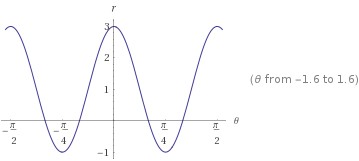
The polar graph of it is:
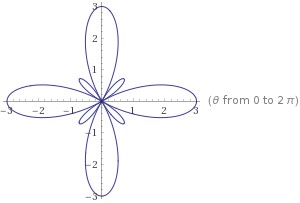
Additionally, it shows us that, in the cartesian coordinate system, values of
The cartesian graph of this area is:
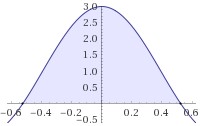
The polar graph of this area is:

Similarly, in the cartesian coordinate system, values of
The cartesian graph of this area is:
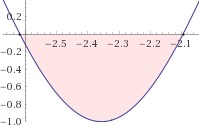
The polar graph of this area is:
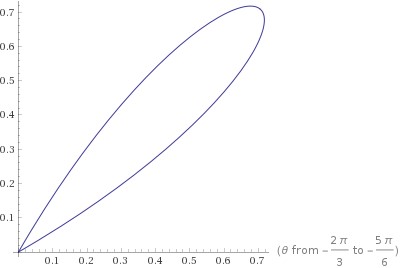
The eight
To find the area of one small leaf, we will take the integral of the function and evaluate it between
Let
Let's substitute:
Area of one small leaf
Area of all four small leaves

